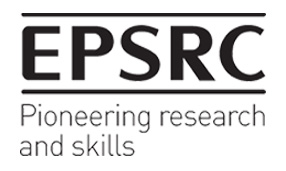This document provides a selection of application scenarios for the Observatory. The purpose of the document is to facilitate discussion of required functionalities, testing and evaluation of the system.
There are likely to be many more possible application scenarios. We should probably collect these and then think about which ones we can cater to and which ones we cannot.
ICT researcher working on cloud computing
Dr. C is working on a research proposal to the EU in the area of cloud computing. As part of the proposal he has to fill in an ethical issues table and discuss how he will address the ethical issues.
C is a computer scientist with no formal training in ethics. He is looking for a way to quickly understand which ethical issues may arise in this type of work and what he would need to do in order to address them.
ICT researcher encountering privacy issues in personal data collection
Professor P is a computer scientist who is working on a trustworthy computing project. Part of her role in this project is to develop real-life use cases that are related to a range of applications, including transport, healthcare and cybersecurity applications.
P. has some experience in requirements collection. However, coming from a university where technical projects were not subject to formal ethics review, she is not sure what the requirements might be. She assumes that personal data collection, in particular of sensitive data such as those related to healthcare require some sort of protocol. She is looking for guidance on how to deal with this sort of problem.
Research funder preparing a call
Dr. E from the ESRCP (Estonian Security Research Council Panel) is preparing a call for proposals aimed at the global uncertainties grand challenge. The idea is to develop generic technical tools that can be applied across a range of application areas in order to ensure the security of information infrastructure. Sub-categories of technologies in this area will include biometric authentication devices, autonomous network analysis tools as well as socio-economic analyses of the viability of such tools.
Dr. E realises that much of the research to be undertaken in this area is likely to raise ethical issues. He would like to ensure that the call for proposals itself does not raise ethical problems. In addition he is keen to understand which ethical issues may arise from the technologies under review in order to understand how proposers could address them and to include evaluation criteria for proposals into the call and evaluation instruments.
Professional body investigating a complaint
Dame B., President of the BCS (formerly the Brazilian Computer Society), has received a complaint about the conduct of Professor A., a well-known computer scientist. Professor A. is a leading researcher in the area of quantum encryption. He has managed to develop a marketable device that uses principles of quantum computing to decrypt currently available encryption mechanisms. Because of the power of quantum computing the device promises to be able to decrypt anything that is protected by commercially available mechanisms.
Professor A. has created a spin-off company to market the device and several venture capitalists have invested large amounts of money into the organisation. However, one of the companies providing encryption mechanisms as part of its business has complained to the BCS because Professor A. is using his research to eliminate his competition. The complaint states that Professor A. has infringed his professional duties by making a device available that will leave the Brazilian economy open to terrorism, organised crime and industrial as well as political espionage.
The complaint goes on to say that Professor A. should be sanctioned by the BCS because he failed to consider the ethical consequences of his work, even though they were obvious. Dame B. therefore would like to know what standard of duty of care could be expected from a researcher in Professor A.’s position.
Consultant aiming to promote new ethics analysis tool
Dr. W., a technology consultant with a long history of working on international ICT projects in the areas of security, privacy, and information assurance has developed a software-based tool that will facilitate an ethical impact assessment. He is interested in the Observatory as a source of case studies that he can use in order to demonstrate the validity of his tool. In addition he would like to use the Observatory platform to find potential users and market his new tool, which he sees as core to the solution of any ethical issues.
Policy maker developing the future internet
Dr. P. is a scientific assistant to Mr. B, a conservative Member of the European Parliament. B. is trying to develop a profile as a pro-business MEP who uses European research and development policy to increase the competitiveness of the Member States. B. is particularly interested in pushing further investment in future internet because in his local constituency there are several high profile universities doing research in this area.
B. has asked P. to develop a policy brief that outlines the steps that need to be taken in order for further R&D investment in future internet to have maximum impact. P.’s own background is in chemistry and he knows little about future internet. At the same time he is aware of some of the recent debate about privacy and ownership in ICT, so he is keen to ensure that his policy brief is sensitive to these issues.
Journalist looking for information on robots




